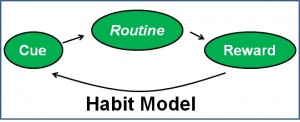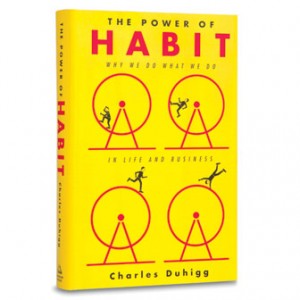The Power of Habit
Why We Do What We Do in Life and Business
Charles Duhigg. Random House. 2012 377 pages
Charles Duhigg, a New York Times investigative reporter, has written an easy to read book about a topic most people consider mundane but its core messages are worth serious reflection:
- Habits can be observed everywhere—in personal, social and business environments and we are often unknowingly slaves to them
- They have a profound effect on our lives
- We should learn how to change them when needed to become more effective business people, more aware consumers and more understanding of the broad social forces around us
The author starts by showing small personal habits and how they are formed. He explains how habits give advertisers, such as P&G, an opportunity to influence our buying behaviors at an unconscious level. He also shows how businesses, have dramatically improved their bottom lines by changing their habits. Alcoa, for example dramatically improved its bottom line by focusing on habits related to worker safety rather than profit. Readers may react that this is simply analyzing and improving high-leverage areas, but moving away from business term “leverage” to the more personal term “habit” brings with it a useful emphasis on the human perspective and opens up new ways of thinking about improving operations.
Duhigg describes a versatile three part model for habits that can be applied to developing, using and breaking them. It includes a trigger/cue, an “automatic” action or routine and a satisfying result or reward following the action.
 The model is easy to remember and helps you see behaviors you never considered habits. Although Duhigg doesn’t apply the more conventional terms, organizations would recognize the routine initiated by a cue as a work process. And, that’s the cue for me to describe my view of how Metaphor Mapping helps change organization habits.
The model is easy to remember and helps you see behaviors you never considered habits. Although Duhigg doesn’t apply the more conventional terms, organizations would recognize the routine initiated by a cue as a work process. And, that’s the cue for me to describe my view of how Metaphor Mapping helps change organization habits.
Organization processes are initiated by cues, include routines at their core and rewards for successful completion. Metaphor Mapping, a visual systems thinking tool, gives you and a group of collaborators metaphoric symbols to examine processes through the lens of the three part model. You see relationships among the cues, the steps of the routine and the rewards. The symbols promote open and deep discussion and produce a high impact map of process weaknesses and their relative importance.
Metaphor Mapping helps you quickly and inclusively change organization habits, no matter how in-grained. For example, process participants can come together in as few as two hours to collaboratively identify and evaluate the causes of client dis-satisfaction and create a new flow to correct them. After those changes are put into action and clients’ expectations are exceeded, the new process is validated and becomes a habit.

